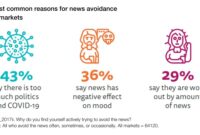With The Power of Purpose in Everyday Purchases leading the way, we delve into how our buying decisions hold more significance than mere transactions. Every item we choose to add to our cart tells a story, reflecting our values, aspirations, and the impact we wish to have on the world. By understanding the purpose behind our purchases, we can transform routine shopping into a powerful tool for personal and societal change.
In today’s fast-paced consumer culture, it’s easy to overlook the deeper meaning behind what we buy. However, being mindful of our purchasing choices not only enhances our shopping experience but also fosters a greater connection to the products we consume. This exploration reveals the intricate relationship between purpose and purchasing behavior, encouraging us to align our financial decisions with our personal values.
In today’s fast-paced digital landscape, the importance of effective communication cannot be overstated. Whether you are engaging with clients, colleagues, or audiences, the ability to convey your message clearly and persuasively is vital for success. This article aims to explore various facets of communication, including its significance in personal and professional realms, the different types of communication, and the best practices to enhance your communication skills.
### The Importance of Communication
Communication is the cornerstone of human interaction. It allows individuals to express thoughts, share information, and build relationships. In a business context, effective communication can lead to improved team collaboration, increased productivity, and enhanced employee satisfaction. On a personal level, strong communication skills can help in resolving conflicts, fostering friendships, and expressing emotions.
#### Building Relationships
Effective communication is essential for building and maintaining relationships. Whether in personal life or the workplace, the ability to share ideas and feelings fosters trust and understanding. Good communicators are often seen as approachable and empathetic, making it easier for others to connect with them.
#### Influencing and Persuasion
In many scenarios, communication serves as a tool for persuasion. Whether negotiating a deal or advocating for a cause, the way you present your ideas can significantly impact the outcomes. Understanding your audience and tailoring your message accordingly can enhance your ability to influence others effectively.
### Types of Communication
Communication can be broadly categorized into several types, each with its characteristics and implications.
#### Verbal Communication
Verbal communication involves the use of spoken or written words. It can occur in various forms, such as face-to-face conversations, phone calls, video conferences, and written correspondence. Clarity, tone, and vocabulary are crucial aspects of verbal communication.
##### Face-to-Face Communication
Face-to-face interactions allow for immediate feedback and non-verbal cues, such as body language and facial expressions. This type of communication is often the most effective for building rapport and trust.
##### Written Communication
Written communication encompasses emails, reports, memos, and any other written documents. It provides a permanent record of information and allows for careful crafting of messages. However, it lacks the immediacy of verbal communication and can sometimes lead to misunderstandings if not clear.
#### Non-Verbal Communication
Non-verbal communication includes body language, gestures, posture, and facial expressions. Often, non-verbal cues can convey more than words themselves. Being aware of your own non-verbal signals and interpreting those of others can enhance your understanding and effectiveness in communication.
### Enhancing Communication Skills
Improving communication skills is an ongoing process that requires self-awareness and practice. Here are some strategies to consider:
#### Active Listening
Active listening is a vital component of effective communication. It involves fully concentrating on what the other person is saying, rather than simply waiting for your turn to speak. Techniques for active listening include nodding, summarizing what you’ve heard, and asking clarifying questions.
#### Clarity and Conciseness
When conveying your message, aim for clarity and conciseness. Avoid jargon and overly complex language. Instead, use simple, straightforward language to ensure your audience understands your message without confusion.
#### Empathy
Empathy plays a crucial role in communication. Understanding and acknowledging the feelings and perspectives of others can lead to more meaningful interactions. This is especially important in conflict resolution, as it helps to create a collaborative environment for discussion.
#### Adaptability
Every audience is different, and being able to adapt your communication style to suit various situations is invaluable. Consider the preferences and expectations of your audience when crafting your message.
### Overcoming Communication Barriers
Despite our best efforts, communication barriers can arise. These barriers can stem from various sources, including cultural differences, emotional states, or physical distractions. Here are some strategies to overcome these challenges:
#### Cultural Awareness
In today’s globalized world, being culturally aware is essential. Different cultures have distinct communication styles, values, and norms. Taking the time to understand cultural differences can prevent misunderstandings and foster more inclusive communication.
#### Managing Emotions
Emotions can significantly impact communication. When individuals are upset or frustrated, their ability to communicate effectively decreases. Learning to manage your emotions and recognizing emotional cues in others can help maintain constructive conversations.
#### Minimizing Distractions
In a world filled with distractions, it’s essential to create an environment conducive to communication. This might involve setting aside specific times for conversations, turning off notifications, or choosing quiet locations for important discussions.
### Conclusion
Effective communication is a multifaceted skill that requires ongoing development and practice. By understanding its importance, recognizing the different types of communication, and implementing strategies to improve your skills, you can enhance your interactions in both personal and professional contexts. As you become a more effective communicator, you’ll find that your relationships deepen, your influence grows, and your overall effectiveness in achieving your goals increases.
In summary, strive for clarity, listen actively, show empathy, and be adaptable. By doing so, you’ll be well on your way to mastering the art of communication.
In conclusion, The Power of Purpose in Everyday Purchases emphasizes that each purchase can be a deliberate step towards a more meaningful life. By recognizing the significance of our choices, we empower ourselves to make decisions that resonate with our values and contribute positively to our communities. As we move forward, let’s continue to shop with intention, transforming everyday purchases into impactful expressions of purpose.
FAQ Compilation: The Power Of Purpose In Everyday Purchases
Why is purpose important in everyday purchases?
Purpose adds meaning to our buying decisions, helping us align our purchases with our values and intentions.
How can I identify my purchasing purpose?
Reflect on your values, interests, and the causes you support to determine what purpose resonates with your buying choices.
What are some examples of purposeful purchases?
Examples include buying from local businesses, choosing eco-friendly products, or supporting fair trade items.
Can purposeful purchasing impact my financial decisions?
Yes, being purposeful can lead to more thoughtful spending, potentially saving money by avoiding impulse buys and focusing on quality over quantity.

How can businesses promote purposeful purchasing?
Businesses can highlight their values, engage in ethical practices, and educate consumers about the impact of their products.



